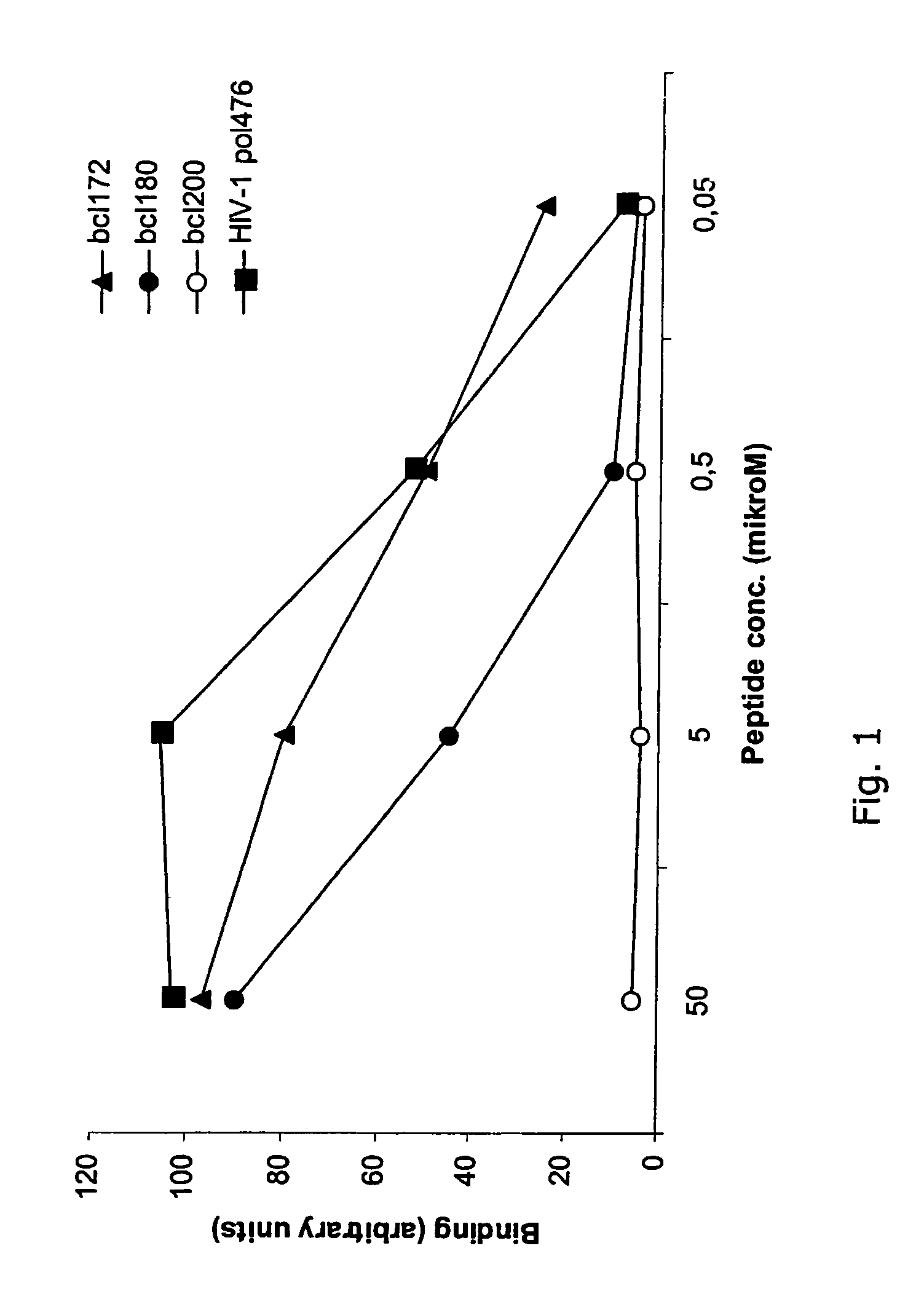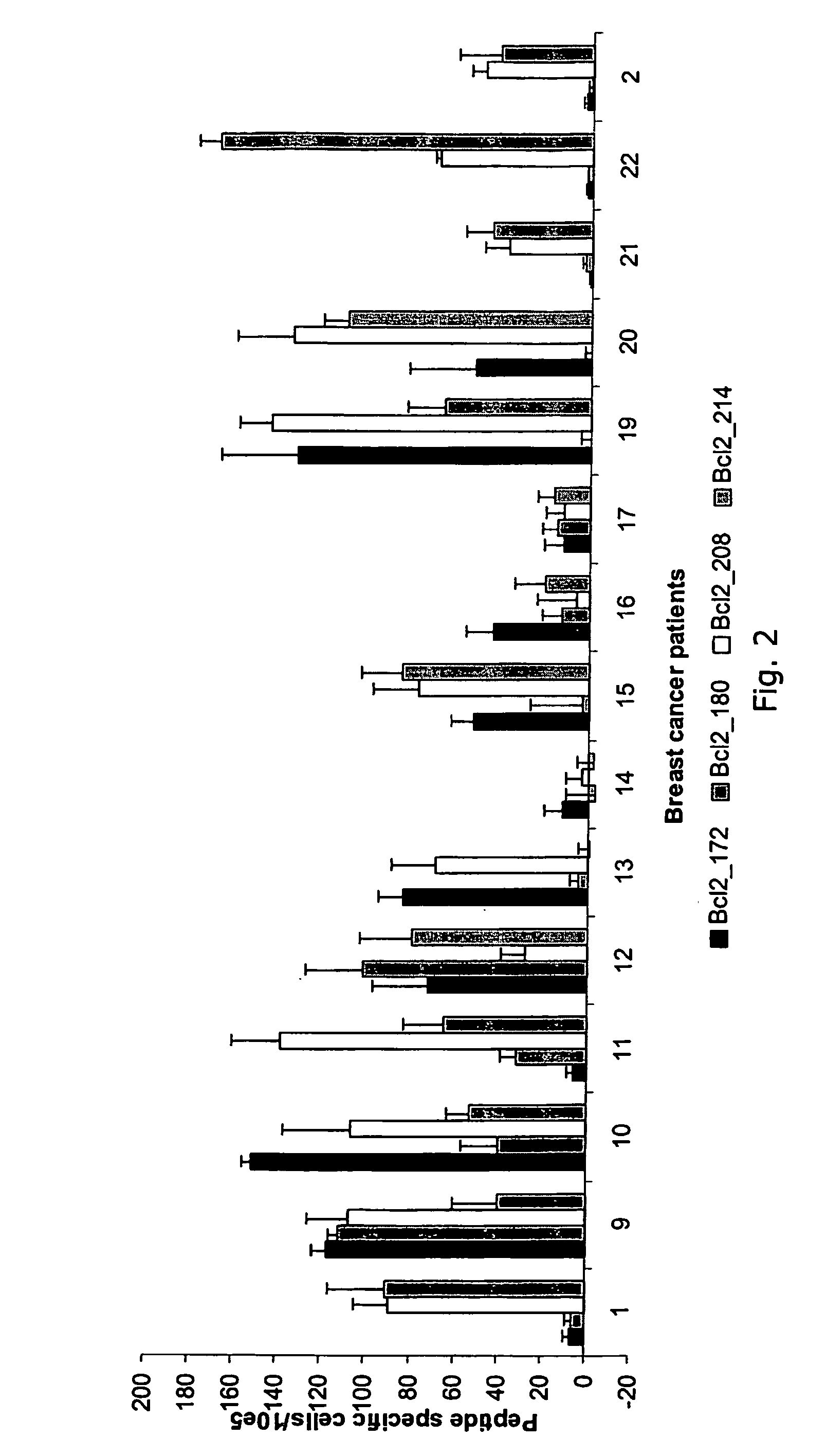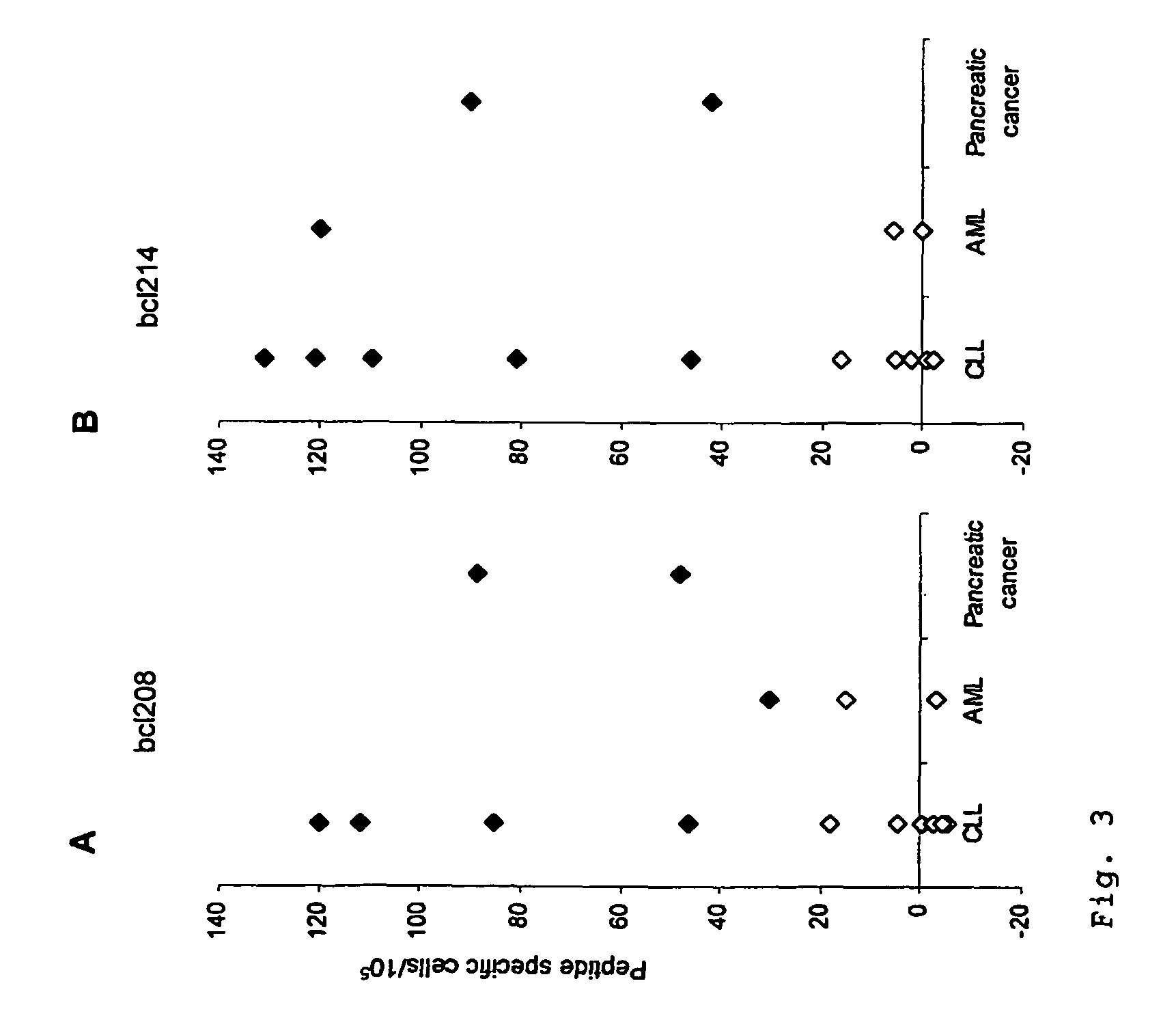Proteins belonging to the Bcl-2 family and fragments thereof, and their use in cancer patients
a protein and bcl-2 technology, applied in the field of cancer prophylaxis and therapy, can solve the problems of poor prognosis of various human cancers, inability to apply peptides to tumours of non-melanocyte origin, and the inability of cancer cells to be given a wide variety of chemotherapeutic agents, and achieve the effect of eliciting ctl immune responses
- Summary
- Abstract
- Description
- Claims
- Application Information
AI Technical Summary
Benefits of technology
Problems solved by technology
Method used
Image
Examples
example 1
[0141]Immune responses against Bcl-2 in breast cancer patients
Materials and Methods
1. Patients
[0142]Peripheral blood lymphocytes (PBL) were collected from breast cancer patients. PBL were isolated using Lymphoprep separation, HLA-typed (Department of Clinical Immunology, University Hospital, Copenhagen, Denmark) and frozen in FCS with 10% DMSO. None of the patients received immunotherapy prior to sampling of blood.
2. Assembly Assay for Peptide Binding to MHC Class I Molecules
[0143]The binding affinity of the synthetic peptides (Invitrogen, Carlsbad, Calif., USA) to HLA-A2 molecules, metabolically labelled with [35S]-methionine, was measured in the assembly assay, as described previously. The assay is based on peptide-mediated stabilisation of empty HLA molecules released upon cell lysis, from the TAP-deficient cell line T2. Stably folded HLA-molecules were immune-precipitated using the HLA class I-specific, conformation-dependent mAb W6 / 32, and separated by isoelectric focusing (IEF...
example 2
Immunogenicity of Bcl-2 in Cancer Patients
Summary
[0150]Herein, we describe spontaneous T-cell reactivity against Bcl-2 in peripheral blood from patients suffering from unrelated tumor types, i.e., pancreatic cancer, AML and CLL. Additionally, we show that these Bcl-2 reactive T cells are indeed peptide specific, cytotoxic effector cells. Thus, Bcl-2 may serve as an important and widely applicable target for anti-cancer immunotherapeutic strategies, e.g., in the combination with conventional radiation- and chemotherapy.
Introduction
[0151]The Bcl-2 family comprises several key players in the regulation of apoptosis and includes both proapoptotic as well as antiapoptotic molecules. Bcl-2 is a critical cellular factor contributing to the pathogenesis and progression of cancer. In the present study, we examined the natural cellular immunogenicity of Bcl-2 in cancer patients.
Methods
Patients
[0152]PBL were isolated using Lymphoprep separation, HLA-typed (Department of Clinical Immunology, Un...
example 3
Immunogenicity of Bcl-X(L) in cancer patients
Summary
[0161]Here, we demonstrate that Bcl-XL is a target for T-cell recognition in cancer patients. Thus, we describe spontaneous HLA-A2- and HLA-A3-restricted cytotoxic T-cell responses against peptide epitopes derived from Bcl-XL by means of ELISPOT and flow cytometry stainings. Thus, cellular immune responses against apoptosis inhibitors like the Bcl-2 family proteins appear to represent a general phenomenon in cancer, and consequently, this group of proteins represents attractive universal target proteins for anti-cancer immunotherapy. Additionally, since elevated expression of these proteins in cells is correlated with drug resistance, the combination of immunotherapy with cytotoxic chemotherapy is a very appealing way to treat cancer.
Introduction
[0162]The antiapoptotic protein Bcl-XL is produced from the long alternative splice form of the bcl-x gene, while proapoptotic Bcl-XS is derived from the short alternative splice form of th...
PUM
| Property | Measurement | Unit |
|---|---|---|
| affinity | aaaaa | aaaaa |
| frequency | aaaaa | aaaaa |
| resistance | aaaaa | aaaaa |
Abstract
Description
Claims
Application Information
 Login to View More
Login to View More - R&D
- Intellectual Property
- Life Sciences
- Materials
- Tech Scout
- Unparalleled Data Quality
- Higher Quality Content
- 60% Fewer Hallucinations
Browse by: Latest US Patents, China's latest patents, Technical Efficacy Thesaurus, Application Domain, Technology Topic, Popular Technical Reports.
© 2025 PatSnap. All rights reserved.Legal|Privacy policy|Modern Slavery Act Transparency Statement|Sitemap|About US| Contact US: help@patsnap.com



